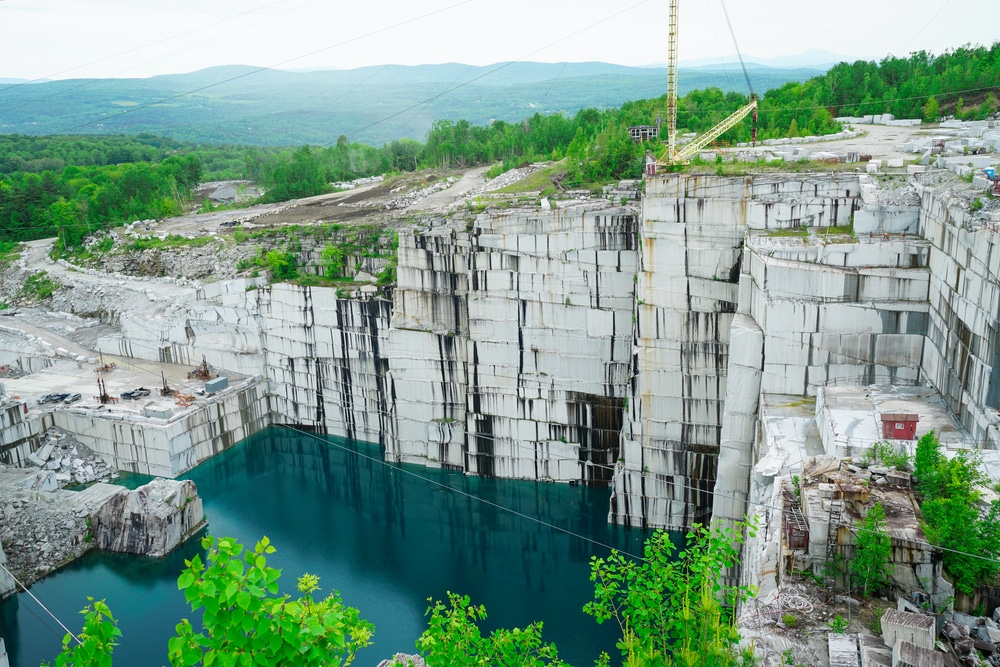The Covert Treasures: Checking Out Granite Quarries in South Africa
The Covert Treasures: Checking Out Granite Quarries in South Africa
Blog Article
Revealing the Mysteries of Granite Quarrying: Where Stamina and Elegance Meet
The globe of granite quarrying is a realm where the raw strength of nature merges with human artistry to create frameworks that stand the examination of time with an air of style. From the midsts of quarries to the thorough sprucing up in workshops, the process of transforming granite right into architectural marvels is a complex dancing of custom and innovation. As we peer into the depths of this old craft, we start to uncover the covert details that shape the extremely significance of our built environment.
The Beginnings of Granite Quarrying
In the record of architectural history, the origins of granite quarrying are shrouded in a tapestry of old workmanship and geological wonders. Going back to ancient Egypt and Mesopotamia, the removal of granite from quarries noted the beginning of a trip that would at some point result in the development of a few of the globe's most famous frameworks.
Granite quarrying's origins can be traced to the proficient craftsmens who identified the rock's durability and aesthetic appeal. Through a combination of primitive tools and sheer determination, these very early quarry employees uncovered granite blocks that would certainly end up being the structure blocks of human beings.
As people developed, so did the strategies of quarrying granite. The Romans, renowned for their design prowess, established advanced methods for extracting granite to create monuments, temples, and roads that stood the test of time.
The heritage of these ancient quarrying methods remains to shape modern style, with granite staying a sign of stamina and sophistication in building and construction jobs around the globe. (granite quarries in south africa)
Tools of the Quarrying Trade
The evolution of granite quarrying strategies from ancient people to modern-day times highlights the vital function played by the devices of the quarrying trade in shaping the industry's methods. In ancient times, quarrying devices were fundamental, often containing knives, hammers, and wedges made from materials like bronze or iron. These tools required substantial manpower and time to remove granite obstructs from quarries.

In addition, the intro of pneumatically-driven tools and high-powered machinery has actually considerably decreased the physical labor needed in quarrying procedures, enhancing employee safety and security and performance. As the quarrying sector proceeds to innovate, the devices of the trade continue to be at the leading edge of driving development and forming the future of granite removal.
Extracting Blocks of Granite
Utilizing accuracy machinery and advanced methods, the extraction of granite obstructs from quarries has ended up being an innovative process in the modern quarrying market. The preliminary step involves determining the place and size of the granite down payment to determine one of the most efficient removal approach. As soon as an ideal website is selected, the removal click here for info procedure begins with the exploration of holes for the placement of dynamites. Regulated blowing up strategies are then utilized to disintegrate the granite right into convenient areas.

Polishing and Completing Strategies
To accomplish a perfect surface area on granite blocks, skilled artisans use a series of precise polishing and ending up strategies. After the preliminary removal and forming processes, the granite obstructs undertake a detailed polishing stage to enhance their all-natural appeal and sturdiness.
Along with sprucing up, finishing methods are applied to more fine-tune the granite's look. These strategies may include flaming, refining, or cleaning, each offering unique structures and coatings to match various aesthetic choices. Flaming, for example, entails revealing the granite surface to high temperatures to create a harsh, textured surface, suitable for outside applications where slip-resistance is crucial. Developing, on the various other hand, offers a matte finish that is smooth to Visit Your URL the touch, perfect for interior counter tops and flooring. By thoroughly picking and applying these polishing and ending up techniques, artisans can change raw granite obstructs right into splendid items that display both strength and beauty.

Ecological Influence and Sustainability
With the expanding focus on ecological consciousness in the industry, granite quarrying techniques are significantly scrutinized for their effect on natural sources and lasting sustainability. Quarrying for granite can have considerable environmental effects. The extraction procedure often involves making use of heavy equipment, explosives, and huge quantities of water, bring about habitat devastation, soil disintegration, and water contamination. Furthermore, the transport of granite from quarries to processing facilities creates carbon discharges, even more contributing to environmental degradation. granite quarries in south africa.
To mitigate these impacts and ensure sustainability in granite quarrying, market stakeholders are taking on different actions. Executing sophisticated modern technologies to decrease energy intake and water usage, recovering quarried land for environmental restoration, and advertising liable sourcing practices are some techniques being utilized. Moreover, certifications such as the Forest Stewardship Council (FSC) and the Management in Power and Environmental Layout (LEED) assistance customers determine eco friendly granite products.
Verdict
Finally, granite quarrying is a process that needs specialized tools and strategies to extract blocks of granite and polish them to a high over at this website level of surface. While the environmental influence of quarrying can be considerable, efforts are being made to enhance sustainability practices in the market. On the whole, granite quarrying is a delicate balance in between using the stamina and beauty of this natural rock while decreasing its influence on the setting.
Report this page